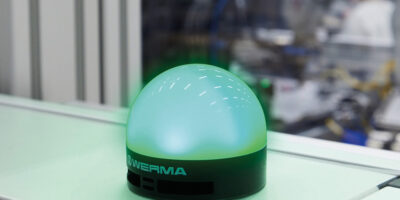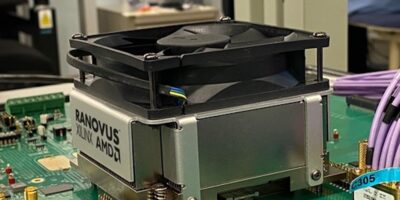At this week’s OFC 2022, NeoPhotonics demonstrates 120Gbaud operation in applications ranging from 800G LR to 400G long haul transmission using its indium phosphide-based coherent receiver and coherent modulators, coupled with its narrow linewidth tunable lasers or distributed feedback lasers.
Demonstrations show that high speed optoelectronic components are available today to match the next generation DSP baud rate of 120Gbaud.
Using its indium phosphide (InP) -based coherent driver modulator (CDM) and intradyne coherent receiver (ICR) with more than 60GHz bandwidth, NeoPhotonics has experimentally demonstrated the feasibility of long-haul transmission systems, namely 400Gbits per second over 1,500km standard single-mode fibre EDFA-only transmission system with a superior required OSNR of 16.7dB at OFEC threshold.
For regional or metro core networks, NeoPhotonics demonstrated 800Gbits per second (with probabilistic shaping) over 1,000km standard single-mode fibre EDFA-only transmission system with a superior required OSNR of 24.3dB at OFEC threshold.
Other demonstrations address ZR DCI transmission systems with 800ZR over a single-span EDFA-based 100km standard single-mode fibre with a superior required OSNR of 25dB at OFEC threshold and a transmitter output power of -6dBm.
Another demonstration for unamplified long range (LR) transmission shows 800LR over an unamplified 10km link with a 9dB link budget, and 800Gbit per second “coherent lite” over an unamplified 1km link with a budget of 5.2dB. Both systems use a low-latency FEC with a BER threshold at four times 10-3. In the latter example, self-homodyne coherent detection “significantly” simplifies the DSP and removes wavelength locking between transmitter and local oscillator, explained NeoPhotonics.
“We are pleased to take this opportunity to highlight the progress we have made in pushing our high-performance indium phosphide integration technologies to even higher speeds and over longer distances to enable new potential applications in cloud and data centre applications,” said Tim Jenks, chairman and CEO of NeoPhotonics. “These 120Gbaud components coupled with our ultra-narrow linewidth external cavity “nano” tunable laser or our distributed feedback lasers, along with concurrent DSP advances, could enable pluggable modules to operate at 800G for applications within and between data centres, as well as to extend the speed and reach of embedded telecomms systems,” he concluded.
NeoPhotonics will be exhibiting and presenting papers at OFC (Optical Fiber Communications) Conference and Exhibition, San Diego, California, USA (8 to 10 March 2022).
NeoPhotonics develops and manufactures lasers and optoelectronic solutions that transmit, receive and switch high-speed digital optical signals for cloud and hyper-scale data centre internet content provider and telecomms networks. The company’s products enable cost-effective, high speed over distance data transmission and efficient allocation of bandwidth in optical networks.







